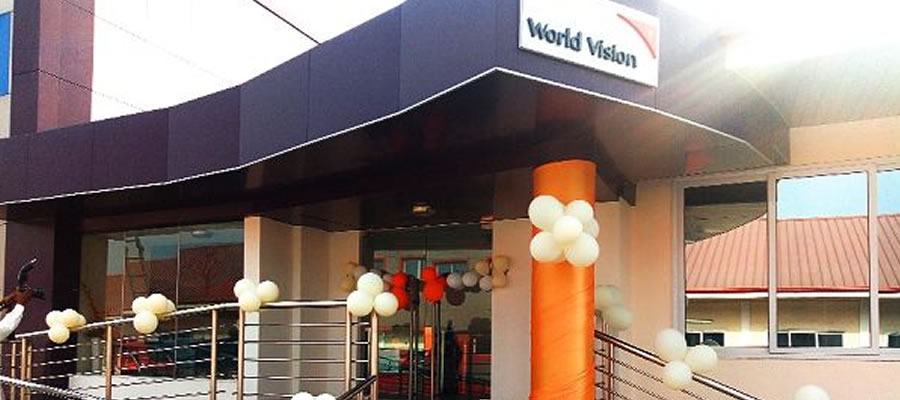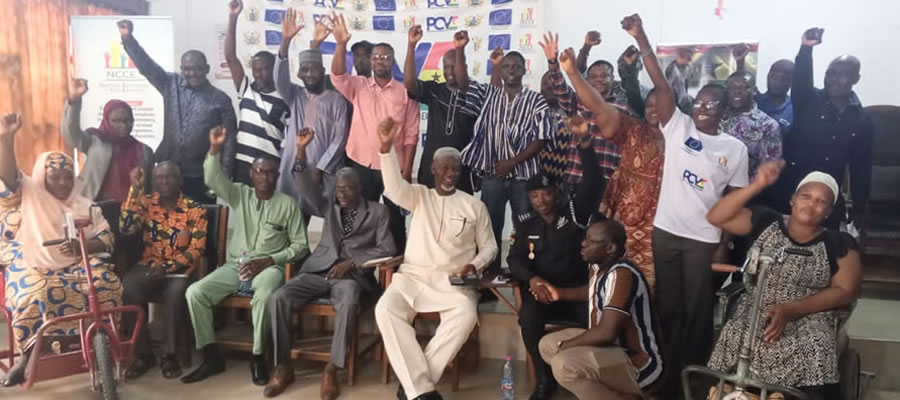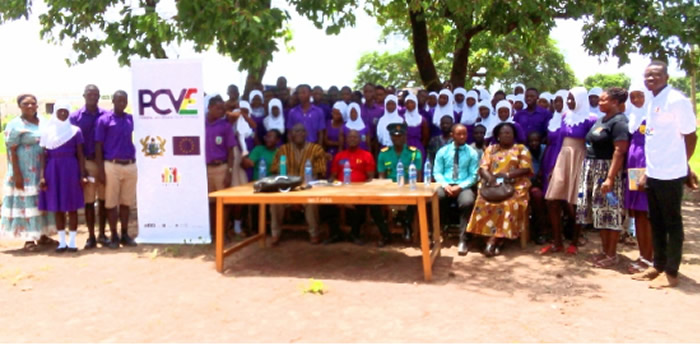

Literacy and Education
Literacy is the ability to read and write with understanding. The inability to do so is called illiteracy or analphabetic.
The primary sense of literacy represents the lifelong, intellectual process of gaining meaning from a critical interpretation of the written or printed text. 3.9.1 Literacy Status Table 3.9 presents data on population 11 years and older by sex, age, literacy status and language.
The data show that a high proportion of the population 63.3 percent is non-literate while 36.7 percent is literate. The data also show that more males 44.4 percent compared to females 29.5 percent are literate. The data further show that younger persons, particularly those in age groups 11-14, 15-19 and 20-24 are more literate than those in the other age groups. This is true irrespective of sex.
The table further shows that, among the literate population the majority 60.0 percent can read and write English and Ghanaian language. About 35 percent is literate in English only. Only about 5.4 percent can read and write a Ghanaian language.
A higher proportion of males 61.6 percent compared with females 57.5 percent is literate in English and a Ghanaian language. However more females 36.6 percent and 5.6 percent compared to males 32.7 percent and 5.2 percent are respectively literate in English only and a Ghanaian language only
Source: Ghana Statistical Service, 2010 Population and Housing Census The level of education which one attains is very important in determining the educational status of an individual. People who attain higher educational levels are revered and respected most in our societies.
School Attendance and level of Education
Table 3.10 presents data on population 3 years and older by school attendance and level of education by sex.
The first part of the Table covers population currently in school by level of education. The data show that of 27,287 persons currently attending school 16.4(added from table) percent is the pre-primary level (nursery and kindergarten) while 77.5% is at the basic level (primary (60.3%) and JSS/JHS, 17.2%) About 5.19 percent is in SSS/SHS while 0.2 percent and 0.4 percent are in
Vocational/Technical/Commercial and Post Middle/Secondary certificate respectively. In addition 0.4 percent is at the tertiary level. The data on that currently in school show that with the exception of the pre-primary and basic level, male proportions is higher than those of females. The gender gap is higher with increase in level of education.
Thus while 6.4 percent males are attending SSS/SHS the proportion for females is 3.5 percent. The second part of the Table provides data on past school attendants by level of education and sex. The data shows that of the 4,899 persons who previously attended school, 75.9 percent attained basic education (primary 47.3% JSS/JHS 2.1% and middle 7.6%). In addition 13.9 percent attained SSS/SHS and secondary level while 1.6% were at
Vocational/Technical/Commercial schools. In addition 4.6 percent and 4.2 percent attended post middle/secondary schools and tertiary institutions respectively. The data on past school attendants by sex show higher female proportion 82.7 percent than male proportion 71.2 percent attended basic education.
A slightly higher proportion of females 1.8 percent than males 1.4 percent attended Vocational/Technical/Commercial schools. At all the other levels (SSS/SHS 16.1% males, 10.6% females, post middle/secondary certificate 5.5% male and 3.2% female and tertiary 5.9% and 1.7% female) more males than females advanced to those levels.
Date Created : 11/18/2017 1:37:58 AM












 facebook
facebook
 twitter
twitter
 Youtube
Youtube
 +233 593 831 280
+233 593 831 280 0800 430 430
0800 430 430 GPS: GE-231-4383
GPS: GE-231-4383 info@ghanadistricts.com
info@ghanadistricts.com Box GP1044, Accra, Ghana
Box GP1044, Accra, Ghana